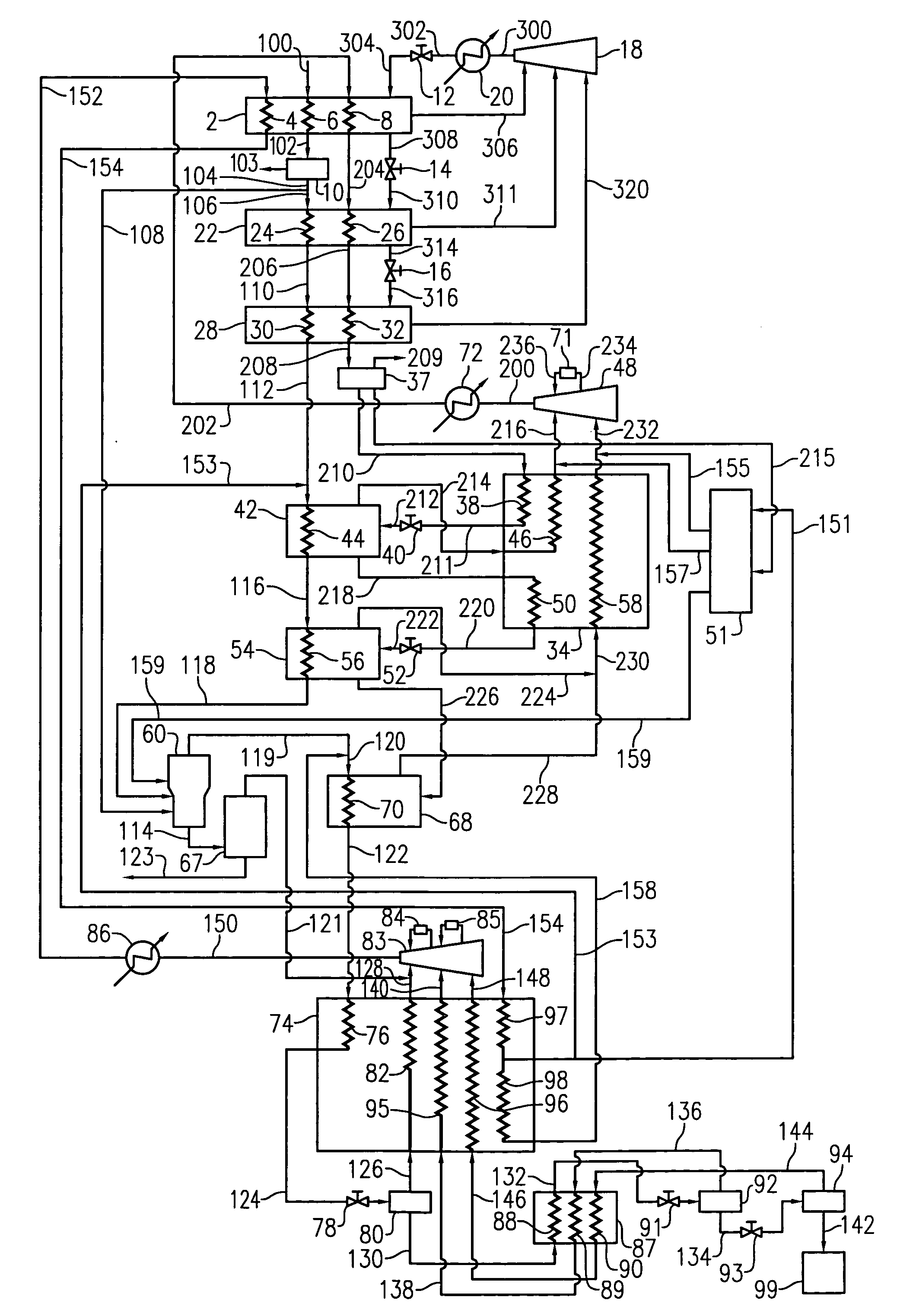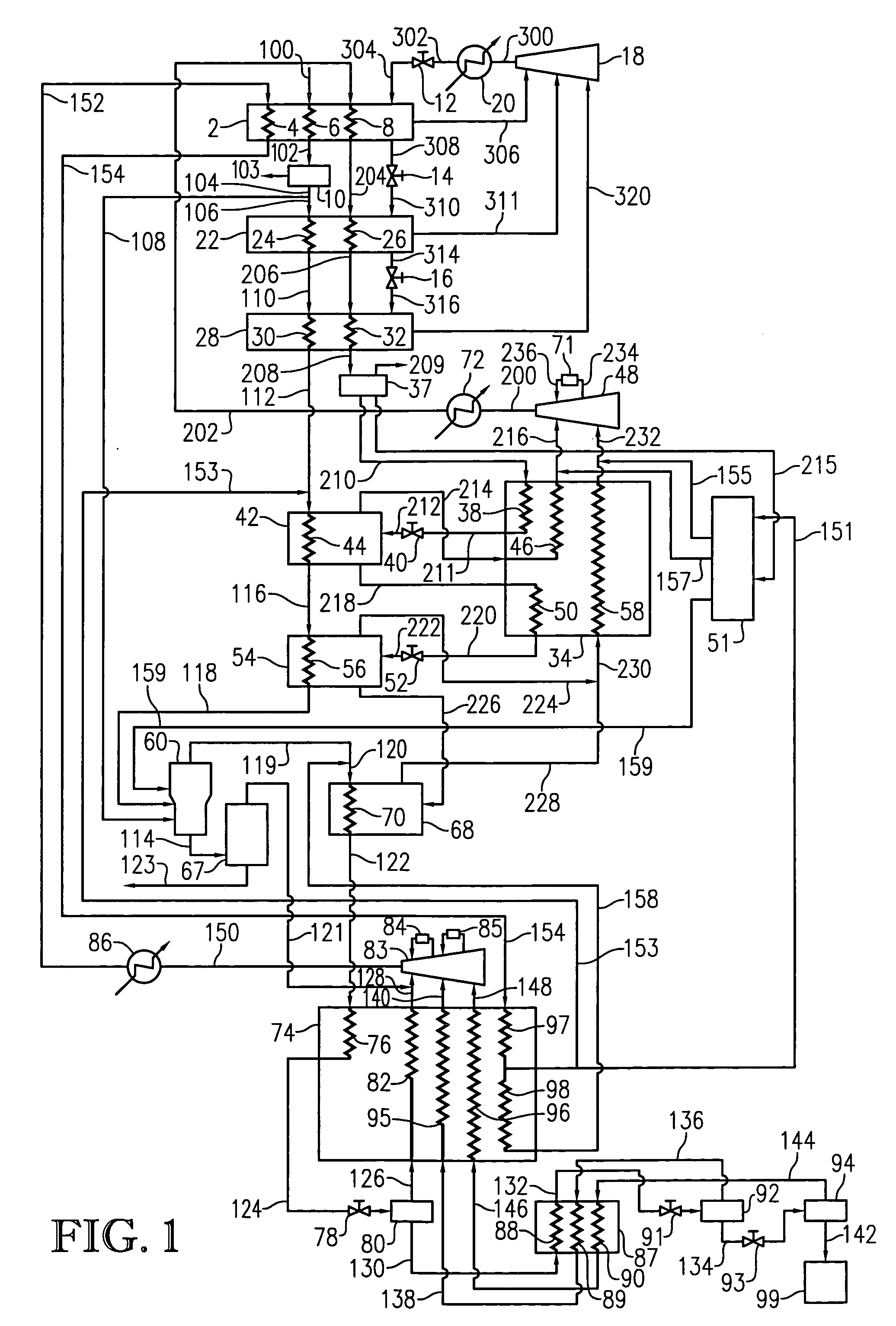LNG system employing stacked vertical heat exchangers to provide liquid reflux stream
a vertical heat exchanger and liquid reflux technology, which is applied in the direction of lighting and heating equipment, refrigeration machines, solidification, etc., can solve the problems of pipeline availability or capacity exceeding the deliverability of pipeline, pipelines that are not available or are impractical, and pipelines that cannot be used
- Summary
- Abstract
- Description
- Claims
- Application Information
AI Technical Summary
Benefits of technology
Problems solved by technology
Method used
Image
Examples
Embodiment Construction
[0025] A cascaded refrigeration process uses one or more refrigerants for transferring heat energy from the natural gas stream to the refrigerant and ultimately transferring said heat energy to the environment. In essence, the overall refrigeration system functions as a heat pump by removing heat energy from the natural gas stream as the stream is progressively cooled to lower and lower temperatures. The design of a cascaded refrigeration process involves a balancing of thermodynamic efficiencies and capital costs. In heat transfer processes, thermodynamic irreversibilities are reduced as the temperature gradients between heating and cooling fluids become smaller, but obtaining such small temperature gradients generally requires significant increases in the amount of heat transfer area, major modifications to various process equipment, and the proper selection of flow rates through such equipment so as to ensure that both flow rates and approach and outlet temperatures are compatibl...
PUM
 Login to View More
Login to View More Abstract
Description
Claims
Application Information
 Login to View More
Login to View More - R&D
- Intellectual Property
- Life Sciences
- Materials
- Tech Scout
- Unparalleled Data Quality
- Higher Quality Content
- 60% Fewer Hallucinations
Browse by: Latest US Patents, China's latest patents, Technical Efficacy Thesaurus, Application Domain, Technology Topic, Popular Technical Reports.
© 2025 PatSnap. All rights reserved.Legal|Privacy policy|Modern Slavery Act Transparency Statement|Sitemap|About US| Contact US: help@patsnap.com



